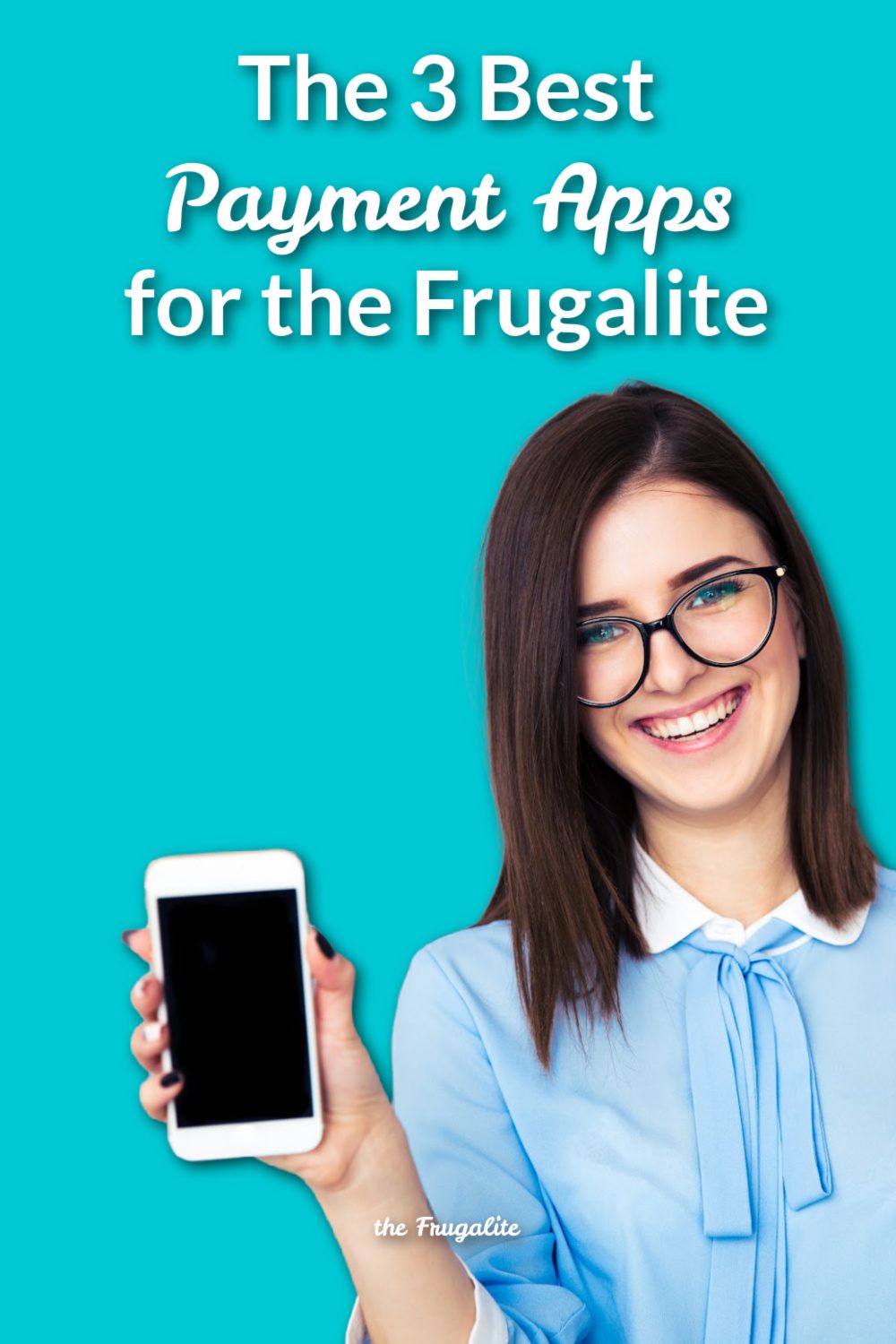(Psst: The FTC wants me to remind you that this website contains affiliate links. That means if you make a purchase from a link you click on, I might receive a small commission. This does not increase the price you’ll pay for that item nor does it decrease the awesomeness of the item. ~ Daisy)
by the author of The Faithful Prepper and Zombie Choices.
Frugalites are thrifty. They know how to make an extra buck, and sometimes that comes from side hustles. We know how to earn extra money cleaning houses, selling car parts, splitting firewood, and the like. Cash is obviously the preferred method of payment, but there are a host of payment apps out there as well the Frugalite should be aware of.
With fewer Americans carrying cash with them than ever before, a Frugalite with a payment app or two on their phone has a better chance of being paid quickly for their work than they would if they had to wait on a check.
But with so many payment apps available out there, how do you choose the best one? Which ones have the lowest fees, the best transfer maximums, and are the most ubiquitous? Let’s take a look at the best payment apps for the Frugalite…
1. Stripe
One of the best payment apps there is out there is Stripe. There are no monthly fees, no setup fees, and no cancellation fees. No membership contracts either. If you want to cancel your Stripe account, you can literally do so at any time without fear of being hit with a “see ya” fee.
That alone should be attractive to Frugalites. And the transaction fees? They’re really not that bad, and you can easily calculate what you’re going to end up paying on the back of a napkin.
If you’re making an online payment via Stripe, you will see a 2.9% fee plus 30 cents for each charge. If that online payment is international, or you’re going to see a payment where currency conversion is involved (e.g. you’re American and are buying something on Etsy from a Canadian), then you’re going to see an additional 1% tacked on.
What about in-person payments with Stripe?
Here, you can expect 2.7% of the transaction plus 5 cents to be charged to your account. So if you’ve just finished a $100 job for somebody, Stripe is going to get $2.75.
Just about every credit card there is out there will function with Stripe, and both iOS and Android products are compatible here. Around-the-clock assistance is available from the Stripe team, should something happen to go wrong, and your payouts can take place within a matter of minutes, to boot.
The only main negative of Stripe I’ve seen is that you are going to wait a bit of time (1-2 weeks) for that first payment to finally clear into your account. After that, though, this payment app is pretty speedy.
2. Cash App
Owned by Square, Cash App was specifically created with peer-to-peer transactions in mind. This makes it a perfect platform for the freelancer or Frugalite involved in a side hustle. As long as you’re sending funds through Cash App that are backed by your Cash App balance or from your bank account, you can send the money without any fees attached.
It’s when you back your transaction from a credit card that a 3% fee is attached. Provided you’re avoiding this option, this can serve as a very convenient and inexpensive means of giving and receiving payment for goods and services when cash isn’t available.
What do Cash App fees look like?
Normally, you’ll have to wait 1-3 days for a payment to transfer into your bank account. You can opt for an instant payment if bills are pressing, but this does necessitate an additional 1.5% fee on the part of Cash App.
There are transfer limits you need to be aware of, though. With the bare minimum amount of information entered into the app, you can send a grand every 30 days. If you’re willing to give Cash App more of your personal information, you can potentially have this transfer ceiling bumped up to $7500 instead. You’ll have to decide what your privacy is worth to you.
Cash App does work with both Android and iOS platforms, but it, unfortunately, doesn’t accept as many credit cards as would be expected. Visa, MasterCard, and American Express are the three options you’re limited to here, so if you use a different credit card company, you may want to look elsewhere.
3. Venmo
Venmo is truly everywhere, and it’s partly because of this reason that I believe this is one of the best payment app options for the Frugalite. You’ll even see this listed as a payment option in a large (and growing) number of stores within your own community.
You can transfer up to $299.99/week (more if you give more information), you can easily split the cost of items (like restaurant meals) with friends, and funds are transferred between users instantly. There are no monthly, annual, or other fees to send money from your bank or debit card to your Venmo account either.
Where fees come into play is when you withdraw money out of Venmo or make a credit card-backed payment. Credit card payments come with a 3% transaction fee, and when you go to transfer money from your Venmo account to your bank account, you’re going to end up paying a quarter.
Are there cons to using Venmo?
There are some negatives with Venmo you need to be aware of, though. For starters, there’s a social media aspect to this app. This is idiotic. Why on earth you would ever want to tell the whole world what you are spending your money on is beyond me. (“Ohh, I see you bought another 30-pack of toilet paper. Having problems, are we? Hmmm?”).
The default setting of this social media feature is ‘public’ too, so unless you actively go in and turn to a ‘private’ setting, everyone who wants to will be able to track your expenditures. Another negative here is that Venmo doesn’t have FDIC insurance. If you’re transferring your money out of Venmo and to your bank as quickly as possible, this isn’t likely to be an issue. However, if you’re one of those people who leave large amounts of money in your payment apps (which is foolish), then you could potentially lose everything when Venmo is hacked.
If you avoid the social media aspect here as well as the temptation to let your money marinate within an app, though, you’ll have a solid payment app at your fingertips.
Major players that didn’t make the cut and why
We narrowed our choices down to the top three, but there were some payment apps that were easy to cross off our list right off the bat. Here they are…
1. Apple Pay
While this option does give you a host of options – you’ll see stores everywhere which now accept Apple Pay – there is one primary reason I do not like Apple Pay: facial recognition.
Personally, I think the privacy implications of any form of facial recognition being involved in just about any industry are not worth the reward. To me, this is an example of a science that can only be misused. I don’t care about any of the other potential benefits. If a payment app wants me to use facial recognition, I’m out.
2. Meta Messenger
Meta is the new name for Facebook. Answer these questions: Does Facebook have a reputation for privacy problems? Have you ever had your Facebook account hacked? Does Facebook have a reputation for selling profile data? Do you want to link your debit card to your Meta account?
I’m incredibly leery of this company, and I think you should be as well.
3. PayPal
Did you know that PayPal can freeze your account? Do something they think they don’t like, and this is a potential threat. And with the state of cancel culture, you don’t know if what you have an interest in (e.g. wakeboarding) is destined to be politically embarrassing tomorrow. I’d recommend opting for Stripe or Venmo instead.
What are your favorite Frugalite-friendly payment apps?
Payment apps are like rabbits: new ones are constantly popping up all over the place. These are what we think are the best of the best for the Frugalite, though. They’ve the lowest fees, minimal restrictions, and the least risk (we think).
What are your thoughts on payment apps, though? Are there others you prefer? Have you had any negative experiences with any of the above? Let us know in the comments below.
About Aden
Aden Tate is a regular contributor to TheOrganicPrepper.com and TheFrugalite.com. Aden runs a micro-farm where he raises dairy goats, a pig, honeybees, meat chickens, laying chickens, tomatoes, mushrooms, and greens. Aden has two published books, The Faithful Prepper and Zombie Choices. You can find his podcast The Last American on Preppers’ Broadcasting Network.












3 thoughts on “The 3 Best Payment Apps for the Frugalite”
You do know that PayPal owns Venmo, right? Keep that in mind.
None. Never used one and never will. You do realize that if you get scammed, you are SOL with your financial institution because technically you “authorized” the transaction. Bad enough with CC compromises and at least those I can dispute and get reversed – all three compromises (over an 8 year period) were with with corp america. Reminds me I need to call the last one on the carpet and inform them their breach occurred 3 months before they told the Feds. Cold day in Hades I’d ever use a debit card online. Heck, I barely use the debit card anywhere except the ATM. Cash or check – call me old school but seriously, do any of us actually need these apps?
Jacee has asked a version of the question that came to my mind, which is simply if any of the recommended vendors have the same capabilities to shut down payments as ApplePay/MetaPay/PayPal? Fee structure may of course make a difference and make one service more preferable than another, but given the current world, I might suggest all such service providers are one step away from exercising high levels of control or violations of privacy.
That said, one can also make the argument that any other financial institution has the same inherent risks.